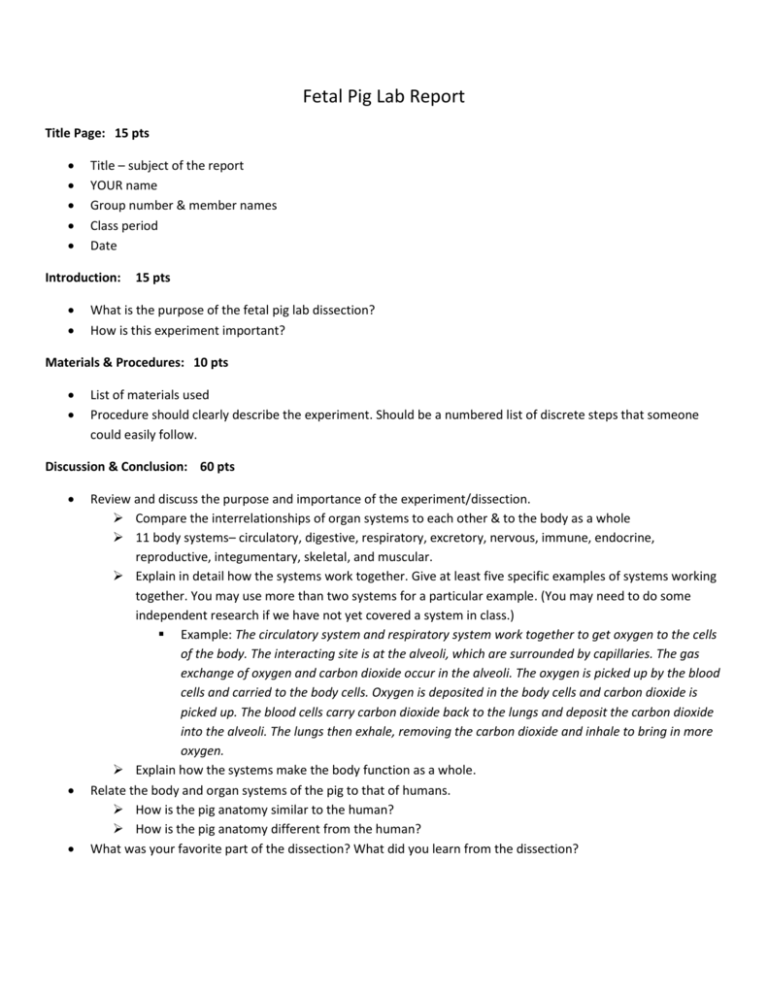Fetal Pig Lab Report
advertisement

Fetal Pig Lab Report Title Page: 15 pts Title – subject of the report YOUR name Group number & member names Class period Date Introduction: 15 pts What is the purpose of the fetal pig lab dissection? How is this experiment important? Materials & Procedures: 10 pts List of materials used Procedure should clearly describe the experiment. Should be a numbered list of discrete steps that someone could easily follow. Discussion & Conclusion: 60 pts Review and discuss the purpose and importance of the experiment/dissection. Compare the interrelationships of organ systems to each other & to the body as a whole 11 body systems– circulatory, digestive, respiratory, excretory, nervous, immune, endocrine, reproductive, integumentary, skeletal, and muscular. Explain in detail how the systems work together. Give at least five specific examples of systems working together. You may use more than two systems for a particular example. (You may need to do some independent research if we have not yet covered a system in class.) Example: The circulatory system and respiratory system work together to get oxygen to the cells of the body. The interacting site is at the alveoli, which are surrounded by capillaries. The gas exchange of oxygen and carbon dioxide occur in the alveoli. The oxygen is picked up by the blood cells and carried to the body cells. Oxygen is deposited in the body cells and carbon dioxide is picked up. The blood cells carry carbon dioxide back to the lungs and deposit the carbon dioxide into the alveoli. The lungs then exhale, removing the carbon dioxide and inhale to bring in more oxygen. Explain how the systems make the body function as a whole. Relate the body and organ systems of the pig to that of humans. How is the pig anatomy similar to the human? How is the pig anatomy different from the human? What was your favorite part of the dissection? What did you learn from the dissection?











